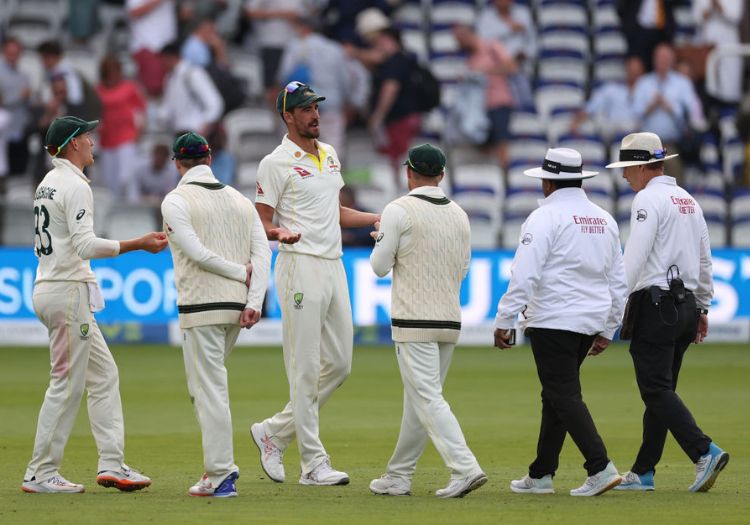Ben Duckett looked to have been dismissed when he hit a Cameron Green bouncer towards fine leg but the decision was reversed. Glenn McGrath later called the decision "a disgrace"

Umpire Marais Erasmus has outlined the process that led to Mitchell Starc's catch which appeared to have dismissed Ben Duckett overturned late on day four of the second Ashes Test at Lord's.
Chasing 371 to win and square the series, England appeared to have lost their fifth wicket when Duckett, on 50 at the time, smashed the ball high towards to fine leg.
Starc took the ball on the run and duly celebrate a key wicket with his Australian teammates.
But replays showed that in completing the catch, the ball brushed the ground before Starc came to a halt.

Australia were left mystified as to the reason for the overturn (Ryan Pierse/Getty Images)

Duckett, who had earlier reached a sixth Test fifty, was given a reprieve (IAN KINGTON/AFP via Getty Images)
Erasmus, the TV umpire, quickly overturned the decision to give Duckett - who himself said "I was out in my mind" - a reprieve three overs before the close on the fourth evening.
The call provoked much debate and furore across the game, with former Australia seamer Glenn McGrath calling the decision "the biggest load of rubbish I've ever seen" and "a disgrace".
A statement from Marylebone Cricket Club, the guardians of the laws of cricket, clarified: "Law 33.3 clearly states that a catch is only completed when the fielder has 'complete control over the ball and his/her own movement.' The ball cannot touch the ground before then. In this particular incident, Mitchell Starc was still sliding as the ball rubbed the ground, therefore he was not in control of his movement."
In relation to the below incident, Law 33.3 clearly states that a catch is only completed when the fielder has "complete control over the ball and his/her own movement."
— Marylebone Cricket Club (@MCCOfficial) July 1, 2023
See here for full clarification: https://t.co/cCBoJd6xOS#MCCLaws pic.twitter.com/TEOE1WKJvu
Speaking to Sky Sports before play on day five of the match, Erasmus, who has umpired international matches since 2006, revealed his view of the incident.
"The law is specific in that it says that the fielder has to have control of their body and movement and in that particular case he was still moving and put the ball on the ground," said the 59-year-old.
"If you take that example and say you were sliding towards the boundary and into the boundary we would have deemed it a four or six depending on if the ball had touched the ground before. There is no difference in interpretation for the catch.
It was actually quite simple because he put the ball on the ground quite early and eventually when he came to stop it was too late."